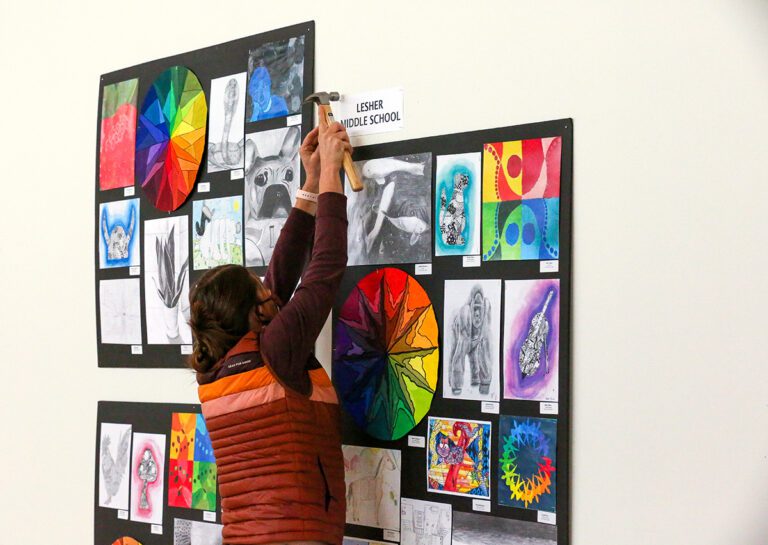As art teacher teachers, we are excited to share what’s going in our classrooms. We share to gain feedback, help other art teachers, learn from others, and to celebrate our students. But, how do you determine which platform is best for you? If you’re looking for a platform that is convenient to use, Instagram is the platform for you!
If you haven’t started a classroom Instagram account yet, here’s a guide to get started!
1. Determine your audience.

When setting up your classroom Instagram account, it’s important to know your target audience. Instagram is a platform students, teachers, and parents all use, which makes it a great advocacy tool for your classroom!
If you’re an elementary art teacher, your audience will probably not be your students but rather other art teachers and parents. In the secondary setting, you might be posting for your school community, your students, and other art teachers.
It’s ok to post for more than one group. The mix of content is what makes some Instagram accounts so fun to follow. That said, if you are specifically looking to grow your number of followers, you may want to target a specific audience.
For example, your students probably won’t care about how you store and organize your paint or label your Sharpies, but an art teacher might!
2. Know your school policies.
When it comes to social media in the school setting, it’s essential to know your school’s policies.
Here are some vital pieces of information you will want to know:
- Can I post pictures of my students?
- Can I use my school’s name?
- Do I have to provide the user account details to my administrator?
- How can I interact with my students?
The answers to these questions should be in your school policies. If they are not, be sure to ask your administrator to prevent any problems.
3. Decide if your account will be private or public.
The answer to this question will most likely be noted in your school policies. In most school districts, families are asked to sign media release forms. These forms give you the right to publish photos of students on the web. This same release form will usually apply to any teacher-run social media accounts. If you plan on including your students in your images and are unsure about the release forms, your account should be set to private. If you are confident in the photo release policy at your school or don’t intend to show students’ faces, a public profile should work well.
4. Check guidelines for interacting with students.
Once again, your school district will most likely have a policy addressing interacting with students through social media. In my school district, it is okay to have student interactions on a school designated account. For example, if a student were to contact me on my personal Instagram page, it would be against school policy for me to interact. However, if a student wants to communicate with me on my school Instagram page, that’s okay.

One of the best things about having a school Instagram account is the interaction with your students. They are always excited when you share something they’ve created, and it allows for a classroom community to be built outside of the school walls.
But, if your students are following you, should you follow your students? That will be a personal preference. I, personally, don’t follow many of my students because of the things I might see. I only follow students when they ask me to. You may want to consider this same type of practice when tagging students in your photos. It’s always best to ask permission first.
Using Instagram as an Instructional Tool
Although Instagram is a great space to share student artwork, it can also be used as an instructional tool.
Here are four ways you can use Instagram as a teaching tool.
- Discover the work of contemporary artists on Instagram.
Sometimes creating a long PowerPoint presentation isn’t necessary. Why not pull up an artist’s Instagram page instead? Here you will be able to see their most recent work! - Explore hashtags with your students.
One of the great features of Instagram is its power to connect a community. Hashtags are a great way to explore different artists and work being shared. - Practice digital citizenship through curation.
In the secondary setting, specifically high school, you could try having your students curate your art room Instagram page. - Post content for student interaction.
Every once in a while it’s fun to have a little contest on your page. Try posting an image like the example below.

Setting up an Instagram account for your classroom does not have to be difficult. You’ll find it takes very little time to post but can speak volumes to your audience. If you haven’t made the Instagram plunge yet, keep these tips in mind as you start!
If you don’t have an Instagram account for your classroom why haven’t you created one?
Do you have a classroom Instagram page? Share your username in the comments!
Magazine articles and podcasts are opinions of professional education contributors and do not necessarily represent the position of the Art of Education University (AOEU) or its academic offerings. Contributors use terms in the way they are most often talked about in the scope of their educational experiences.





